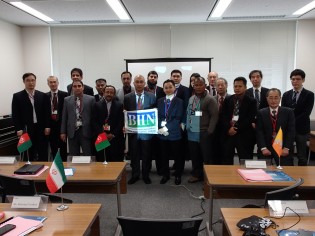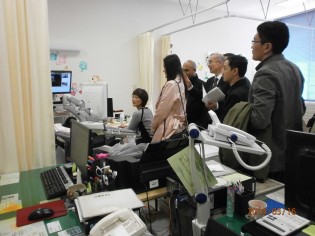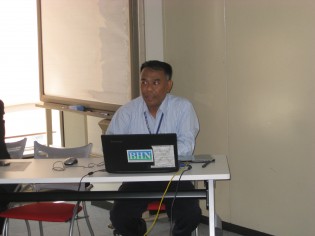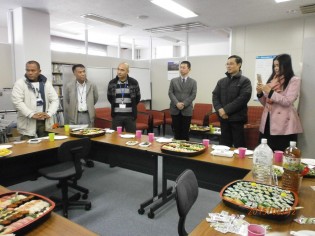Implementing Skills Training for Disaster Prevention, Telemedicine, and Sensor Networks (2014 APT-J4 Training)
2015.4.21 Tue 13:37
The APT (Asia-Pacific Telecommunity) organizes human resource training courses every year under the framework called the APT-J4 Program for engineers from APT member countries who work in the information and communications sector. This year, we made a proposal, which was accepted by the APT, for a training course on “The Use and Application of ICT Services and E-applications to Bridge the Digital Divide.” This is the fourth consecutive training course with which we have been entrusted by the APT since 2011.
APT trainings are aimed to build the human resources necessary to develop the economies and societies of developing countries. In order to do so, the APT solicited and selected participants for this training course from APT member countries, getting 13 people from 12 countries to come to Japan. For three weeks, beginning on March 3rd, 2015, we introduced the participants to various examples of ICT applications currently being used in Japan in places like Tokyo, Sendai, and Tono. These include disaster prevention and reduction systems, telemedicine, M2M sensor networks, as well as environmental and E-agriculture.
Although broadband networks are nowadays widely available through optical and mobile communications in many Asian countries, big issues remain, like regional inequality in medical services and education, as well as the lack of knowledge concerning information security.
Now that all the participants have had the chance to learn about how Japan implements advanced ICT in new urban development projects, and that they have been able to look at real-life examples, we hope they will become future core citizens of their respective countries who can promote their countries’ necessary projects by using ICT. We think that this training course has served as a good preparation for investigating specific joint projects with each country within the framework of the APT-J3/J2 programs in the future.
The distinctive features of this training were the following: a) that the participants had the opportunity to participate in the Third UN World Conference on Disaster Risk Reduction, held in Sendai; b) that they increased their awareness concerning disaster prevention and reduction by observing the area struck by the Great East Japan Earthquake; and c) that they obtained insights for planning projects for their own countries by learning about sensor technology that forms the basis of medical ICT and environmental ICT.
As a result of the rapid increase of devices like smartphones and tablets, as well as the growth of the distribution of rich content, these things have come to form a new and vital foundation for people’s daily life and socioeconomic activity. Seeing the fact that the participants were more proficient at using ICT devices compared to the BHN staff who accompanied them to the observation sites, we hope that the participants will quickly incorporate and extend the use of Japan’s advanced technology.
Normally, the APT pays the travel fees for one participant per country as an “APT fellow.” However, there was another participant from Afghanistan in addition to the APT fellow, paying necessary expenses on their own. This was the second year in a row that additional participants have been sent from Afghanistan at their own expense. We understand that this is a sign that people appreciate the content of the trainings offered by BHN. At the same time, we were happy to find out that the participant from Myanmar was one of the participants of the BHN’s first human resource training 16 years ago. We feel that we have been able to build much stronger human connections throughout Asia.
Thanks to all the BHN staff who supported this project by fulfilling their respective roles, we were able to successfully finish conducting the training. We sincerely thank everyone for their help.
Hachihei Kurematsu, Vice President
English translation by Mariah Gomes




